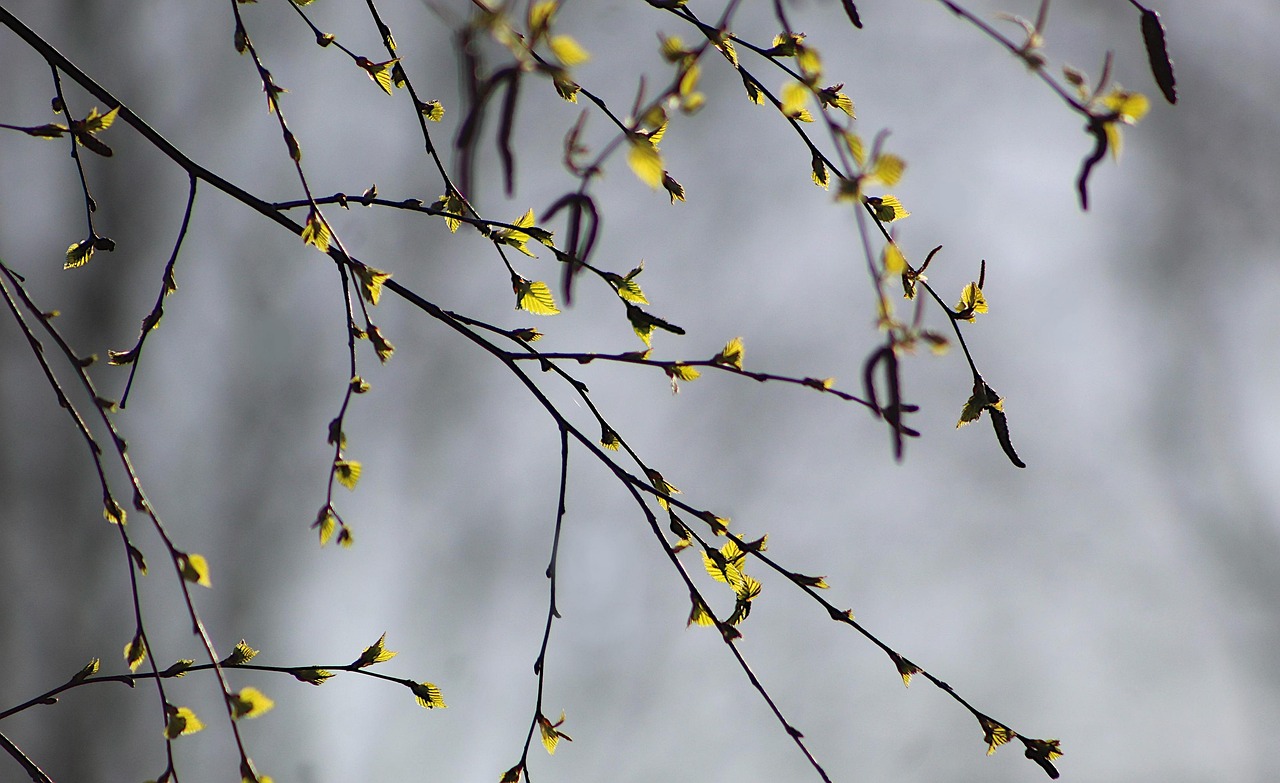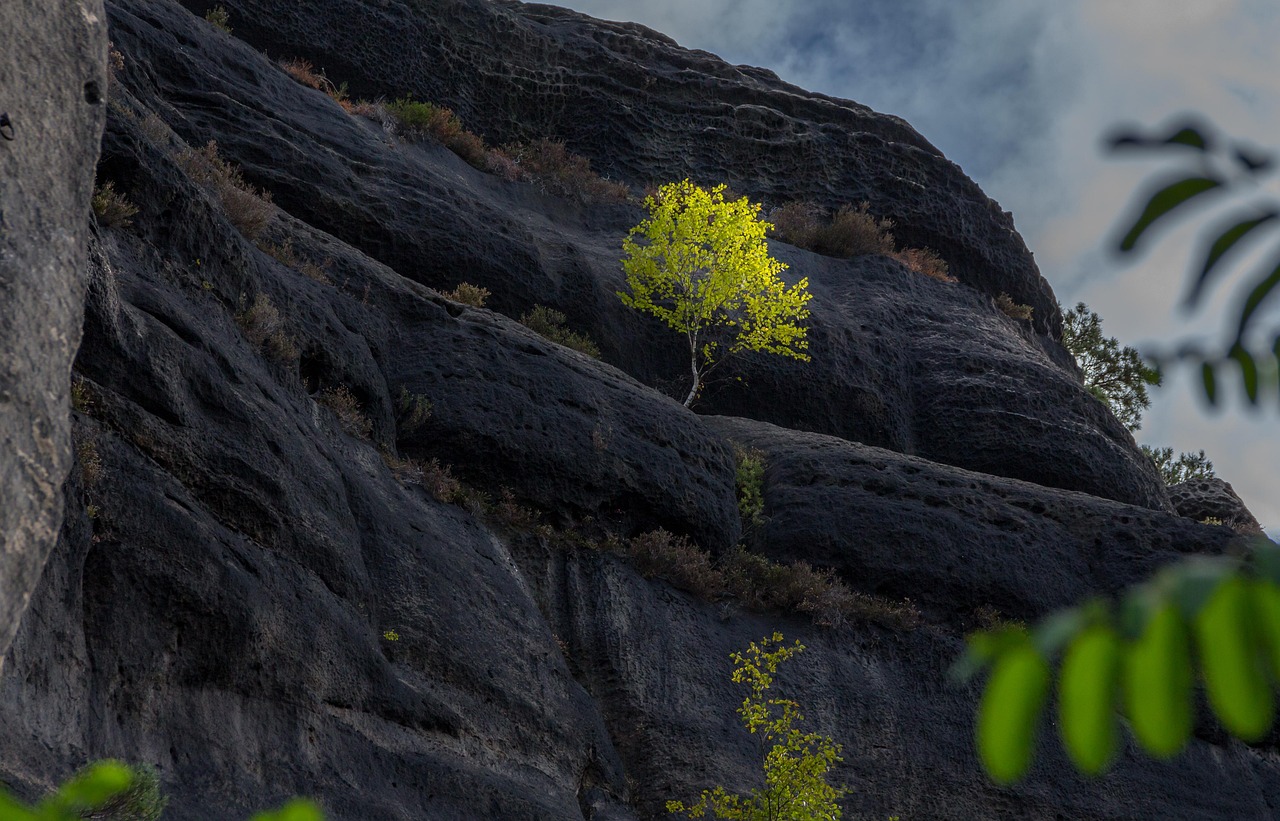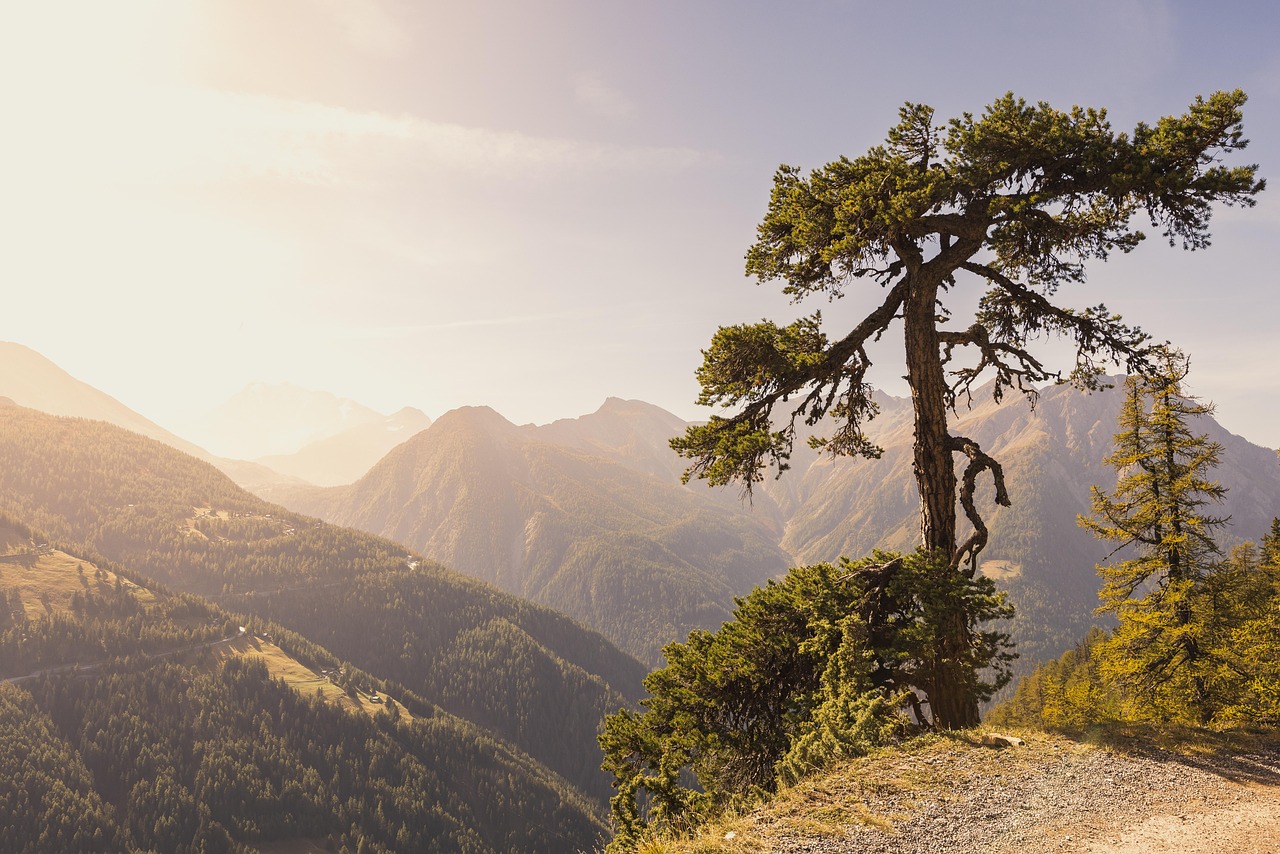Birch trees typically exhibit a moderate growth rate, averaging 1 to 2 feet per year in woodland settings and potentially up to 3 feet annually in optimal landscape conditions. Factors such as species type, soil quality, and environmental conditions play a significant role in their growth.
Birch trees are known for their striking appearance and rapid growth. They belong to the Betula genus and are commonly found in both woodland and landscape settings. These trees are particularly valued for their beautiful bark, which can range from white to yellowish or even black, depending on the species. The growth rate of birch trees can vary significantly based on several environmental factors, including soil type, moisture levels, and sunlight exposure.

In woodland settings, birch trees often grow alongside other species. This coexistence can influence their growth rates as they compete for resources. Conversely, when planted in landscapes with ample space and resources, birch trees can flourish. Understanding the growth rate of birch trees is essential for gardeners, landscapers, and ecologists alike, especially when planning for aesthetic or ecological purposes.
Factors Affecting Birch Tree Growth
The growth rate of birch trees is influenced by various factors. Understanding these can help ensure optimal growth in different settings.
- Soil Quality: Well-drained, loamy soil supports faster growth. Poor soil conditions can slow development.
- Moisture: Regular moisture is crucial. Birch trees prefer moist environments but do not tolerate waterlogged conditions.
- Sunlight: Full sun exposure promotes better growth. Birch trees thrive when they receive at least six hours of direct sunlight daily.
- Species Type: Different birch species exhibit varying growth rates. For example, the River Birch may grow faster than the Paper Birch under similar conditions.
- Competition: In woodland areas, competition from other trees can impact the availability of nutrients and light.
Birch trees play an important role in their ecosystems. They provide food and habitat for various wildlife species. Birds often nest in birch trees, while insects feed on their leaves. In addition to supporting wildlife, birch trees also contribute to soil health through their leaf litter.

Growth Rate Comparison by Species
Different species of birch have distinct growth rates. Here is a comparison of some common birch species:
| Species | Average Height (ft) | Growth Rate (ft/year) |
|---|---|---|
| Paper Birch (Betula papyrifera) | 50-70 | 1-2 |
| River Birch (Betula nigra) | 40-70 | 2-3 |
| Yellow Birch (Betula alleghaniensis) | 50-75 | 1-2 |
| Dwarf Birch (Betula nana) | 2-3 | 0.5-1 |
The River Birch stands out as one of the fastest-growing species, making it a popular choice for landscapes seeking quick shade or ornamental appeal. In contrast, dwarf birch species have a much slower growth rate and are often used in rock gardens or as ground cover.
Planting birch trees can enhance the beauty of any landscape while providing ecological benefits. However, proper care and maintenance are vital to ensure healthy growth. Regular watering during dry spells and appropriate fertilization can significantly improve growth rates. Additionally, understanding the specific needs of each birch species can lead to more successful planting efforts.

As birch trees mature, they can reach impressive heights and create a stunning visual impact in both woodland and landscape settings. Their graceful form and vibrant foliage make them a favorite among many homeowners and landscapers.
Ideal Conditions for Birch Tree Growth
To achieve the best growth rates for birch trees, it is crucial to understand their ideal environmental conditions. These trees thrive in specific climates and soil types. By creating the right conditions, gardeners and landscapers can optimize growth and health.
Climate Preferences
Birch trees are typically found in temperate regions. They prefer climates with distinct seasons, including cold winters and warm summers. Key climate factors for birch growth include:

- Temperature: Birch trees generally grow best in temperatures ranging from 65°F to 75°F. Extreme heat or prolonged cold can hinder growth.
- Humidity: Moderate humidity levels promote healthy growth. Very dry conditions can stress the trees and reduce their vigor.
- Rainfall: Birch trees thrive in areas with consistent rainfall. An average of 30 to 50 inches of annual precipitation is ideal.
Soil Requirements
The soil quality greatly impacts the growth of birch trees. They prefer well-drained, fertile soils. Here are some important soil characteristics:
- pH Level: Birch trees thrive in slightly acidic to neutral soil, with a pH range of 5.0 to 7.0.
- Drainage: Good drainage is essential. Birch trees do not tolerate waterlogged soils, which can lead to root rot.
- Nutrient Content: Rich organic matter in the soil supports healthy growth. Adding compost can enhance soil fertility.
Caring for Birch Trees
Proper care is essential for the successful growth of birch trees. Maintenance practices can help ensure that these trees reach their full potential.
Watering Practices
Birch trees require regular watering, especially during their early years. Here are some watering tips:
- Frequency: Water young birch trees once a week during dry spells. Mature trees usually need less frequent watering.
- Deep Watering: Ensure that water penetrates deeply into the soil to encourage deep root growth.
- Avoid Overwatering: Monitor soil moisture levels to prevent waterlogging, which can harm the roots.
Fertilization
Fertilizing birch trees can support healthy growth and improve their resilience against pests and diseases. Consider the following guidelines:
- Timing: Apply fertilizer in early spring before new growth starts.
- Type of Fertilizer: Use a balanced fertilizer with equal parts nitrogen, phosphorus, and potassium, or opt for a slow-release organic option.
- Avoid Excessive Fertilization: Too much fertilizer can harm roots and lead to excessive leaf growth at the expense of overall tree health.
Pest and Disease Management
Birch trees can be susceptible to various pests and diseases. Early detection and management are crucial for maintaining tree health.
Common Pests
Pests that often affect birch trees include:
- Birch Borers: These insects tunnel into the bark, weakening the tree. Regular inspection can help identify infestations early.
- Aphids: These small insects feed on sap and can cause leaf curling. They may be managed with insecticidal soap or natural predators.
Diseases to Watch For
Birch trees can suffer from several diseases, including:
- Birch Leaf Miner: This pest causes leaf damage and reduces photosynthesis. Infected leaves may need to be removed.
- Canker Diseases: These fungal infections can create lesions on branches. Pruning affected areas can help control spread.
Maintaining good air circulation around birch trees and avoiding overcrowding can help minimize disease risk. Regular inspections can aid in early detection, ensuring better management of both pests and diseases.
Birch Tree Varieties and Their Unique Growth Characteristics
Birch trees are diverse, with various species adapted to different environments and conditions. Each type has unique growth rates, sizes, and appearances. Understanding these differences is essential for selecting the right species for specific settings.
Common Birch Species
Here are some of the most common birch species and their characteristics:
- Paper Birch (Betula papyrifera): Known for its striking white bark, the Paper Birch can grow up to 70 feet tall. It prefers moist, well-drained soils and typically has a growth rate of 1-2 feet per year.
- River Birch (Betula nigra): This species is highly adaptable and can thrive in wet conditions. It grows rapidly, often reaching heights of 40-70 feet with a growth rate of 2-3 feet annually. Its bark peels away in thin layers, adding visual interest.
- Yellow Birch (Betula alleghaniensis): Recognizable by its golden-yellow bark, this species prefers cooler climates and grows to about 50-75 feet tall, with a growth rate of 1-2 feet per year.
- Dwarf Birch (Betula nana): This smaller species typically grows to only 2-3 feet tall. It is commonly found in colder regions and has a very slow growth rate of 0.5-1 foot per year.
Site Selection for Planting Birch Trees
Choosing the right site for planting birch trees is crucial for their successful establishment and growth. The following factors should be considered when selecting a location:
Sunlight Availability
Birch trees require plenty of sunlight to thrive. Ideally, they should receive:
- Full Sun: At least six hours of direct sunlight each day.
- Partial Shade: While some species can tolerate partial shade, consistent exposure to sunlight promotes better growth.
Space Considerations
Birch trees can grow quite large. Therefore, it’s essential to consider the space around them:
- Avoid Overcrowding: Ensure there is sufficient space between birch trees and other plants to allow for airflow and reduce competition for resources.
- Future Growth: Take into account the mature size of the tree when planting to prevent future issues with neighboring plants or structures.
Planting Techniques for Birch Trees
The method of planting significantly affects the growth and health of birch trees. Here are some best practices for planting:
Optimal Planting Time
The best time to plant birch trees is during the early spring or fall when temperatures are moderate. This timing allows for better root establishment before summer heat or winter cold sets in.
Soil Preparation
Before planting, prepare the soil adequately:
- Tilling: Loosen the soil in the planting area to improve drainage and aeration.
- Add Organic Matter: Incorporate compost or well-rotted manure to enhance soil fertility.
Planting Steps
- Dig a hole that is twice the width of the root ball and slightly shallower than the root ball itself.
- Place the tree in the center of the hole, ensuring that the top of the root ball is level with the surrounding soil.
- Backfill with soil, gently tamping down to eliminate air pockets.
- Water thoroughly after planting to settle the soil around the roots.
- Add a layer of mulch around the base to retain moisture and suppress weeds.
Seasonal Care for Birch Trees
Proper seasonal care is essential for maintaining healthy birch trees. Adjusting care practices according to the season can significantly impact growth rates and overall health.
Spring Care
In spring, focus on:
- Fertilization: Apply a balanced fertilizer as new growth begins.
- Pest Inspection: Regularly check for signs of pests or disease as new leaves emerge.
Summer Care
During summer, ensure birch trees receive adequate moisture:
- Irrigation: Water regularly if rainfall is insufficient. Aim for deep watering to encourage strong root systems.
- Weed Control: Keep the area around the tree free from weeds that may compete for nutrients and water.
Fall Care
In fall, prepare birch trees for winter:
- Pruning: Remove any dead or diseased branches to promote healthy growth in spring.
- Mulching: Apply a fresh layer of mulch to insulate roots during winter months.
The commitment to proper care throughout the seasons can lead to vigorous growth and longevity in birch trees, enhancing both woodland and landscape settings.
Future Considerations for Birch Tree Management
As the importance of sustainable forestry and landscaping continues to grow, managing birch trees in both woodland and landscape settings will require a forward-thinking approach. Several factors will play a crucial role in the future growth and maintenance of these trees.
Climate Change Impacts
Climate change poses significant challenges for birch trees. Changes in temperature and precipitation patterns can influence their growth rates and viability. Here are some considerations:
- Temperature Fluctuations: Warmer temperatures may extend the growing season but could also lead to heat stress during peak summer months.
- Altered Rainfall Patterns: Irregular rainfall can affect soil moisture levels, impacting birch tree health. It is essential to monitor local climate trends to adapt care practices accordingly.
- Invasive Species: Warmer climates may facilitate the spread of invasive pests and diseases. Being vigilant about these threats can help protect birch populations.
Urbanization Effects
As urban areas expand, birch trees are increasingly planted in landscape settings. Urban environments can be challenging for these trees due to:
- Soil Compaction: Urban soils are often compacted, limiting root growth and water infiltration. Amending soil with organic materials can help improve conditions.
- Pavement Heat: The heat generated by pavement can stress birch trees. Selecting planting sites that provide some shade or using reflective materials can mitigate this issue.
- Air Quality: Poor air quality can affect tree health. Choosing disease-resistant cultivars and maintaining proper care can enhance resilience.
Community Involvement in Conservation
Engaging communities in birch tree conservation efforts can lead to more sustainable practices. Initiatives may include:
- Education Programs: Teaching community members about the benefits of birch trees and how to care for them can foster a sense of stewardship.
- Tree Planting Events: Organizing community tree planting days helps increase local birch populations and encourages participation in environmental conservation.
- Monitoring Programs: Establishing citizen science projects where community members track the health of local birch trees can provide valuable data for future management strategies.
Final Thoughts
The growth and management of birch trees in woodland and landscape settings provide both aesthetic and ecological benefits. Understanding the various factors that influence their growth, including species selection, site conditions, and seasonal care, is essential for successful cultivation. As climate change and urbanization present new challenges, adopting proactive approaches will ensure the longevity and health of birch populations.
By fostering community involvement and utilizing sustainable practices, we can enhance the beauty of our landscapes while supporting biodiversity. Birch trees, with their unique characteristics and rapid growth rates, will continue to be a cherished part of our natural environment if managed thoughtfully and effectively.
Ultimately, birch trees offer not only visual appeal but also contribute significantly to ecological health, making them a vital component of both woodland ecosystems and urban landscapes. By prioritizing their care and management, we can enjoy the many benefits they provide for generations to come.
